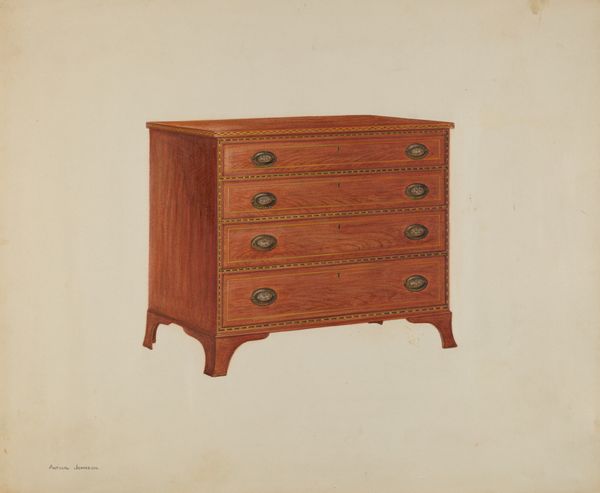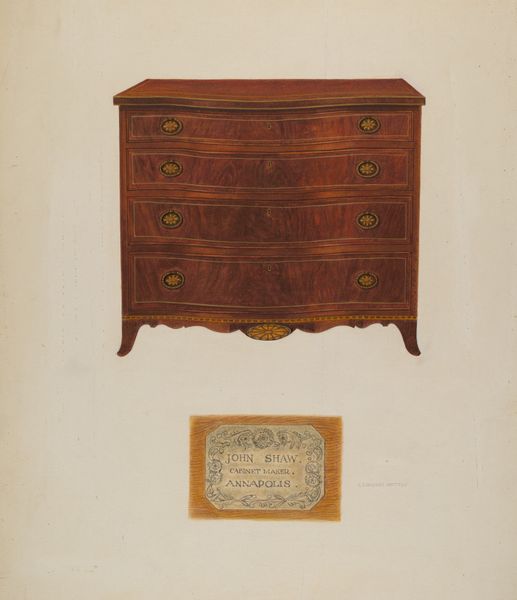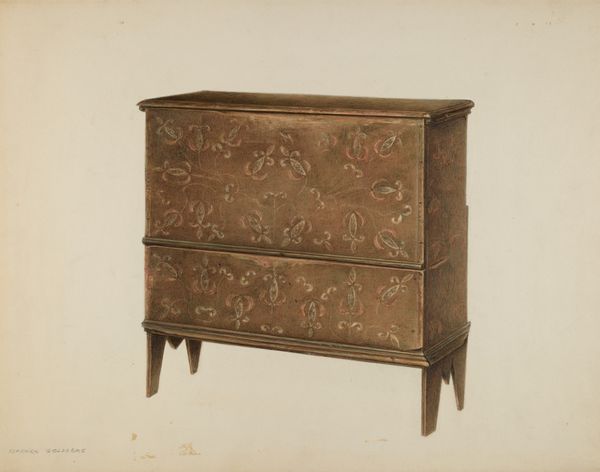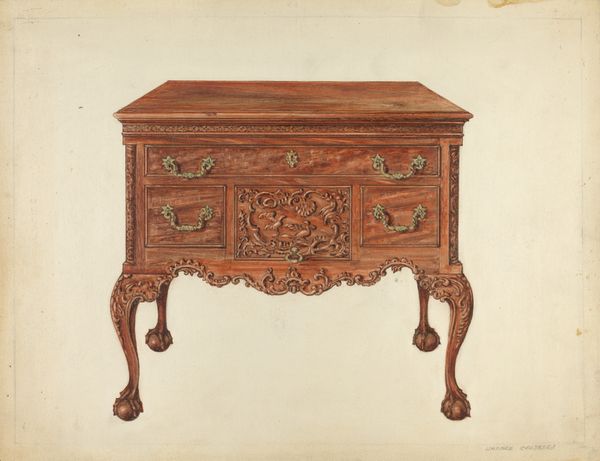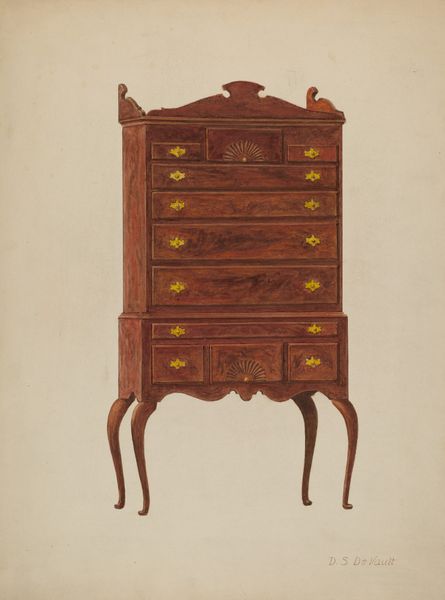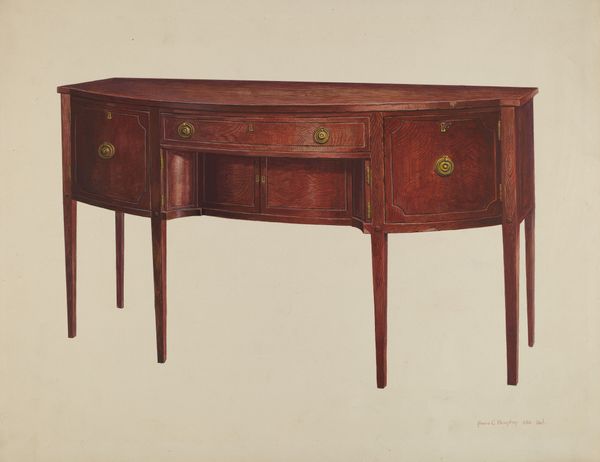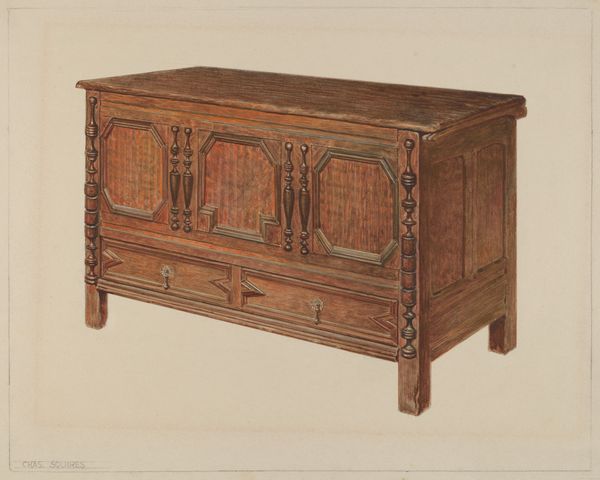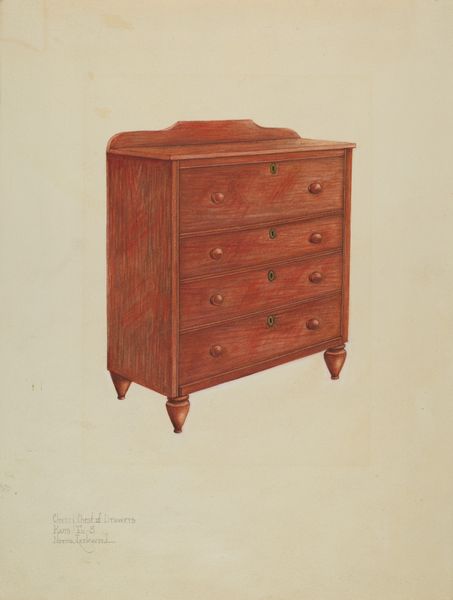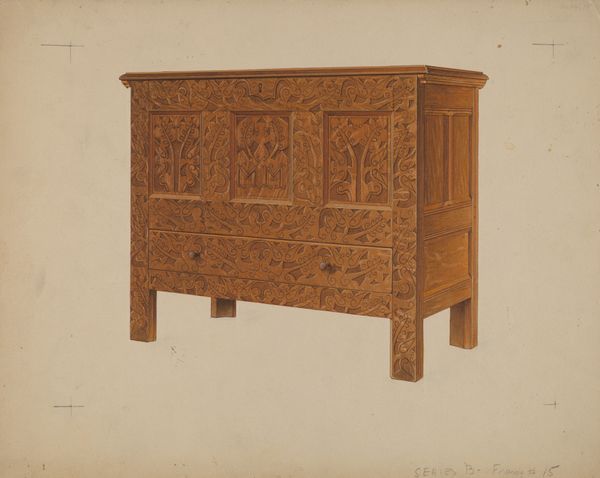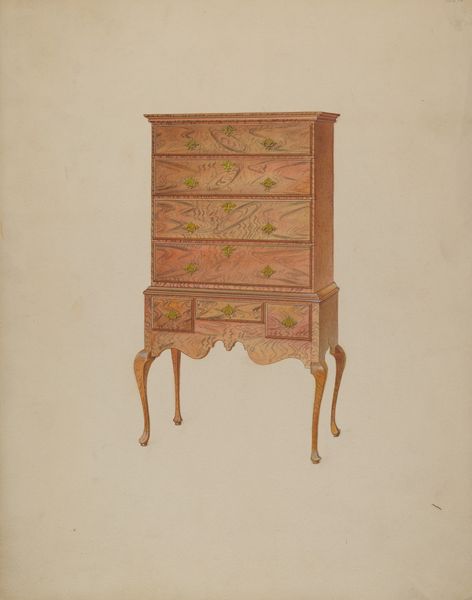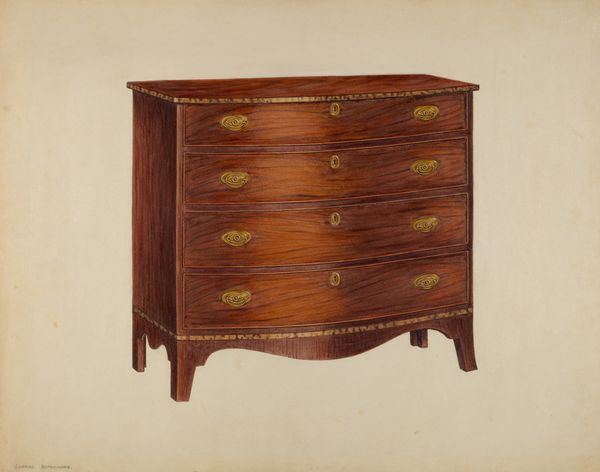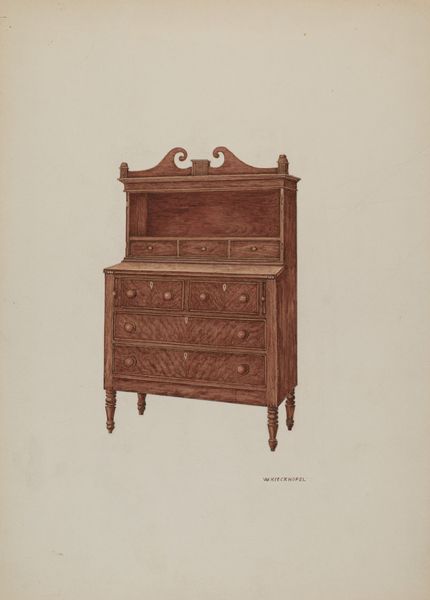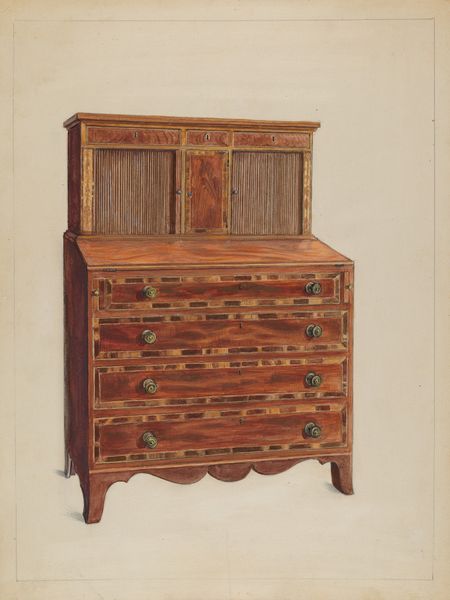
drawing, watercolor
#
drawing
#
oil painting
#
watercolor
#
acrylic on canvas
#
decorative-art
#
watercolor
#
realism
Dimensions: overall: 37 x 45.1 cm (14 9/16 x 17 3/4 in.) Original IAD Object: none given
Copyright: National Gallery of Art: CC0 1.0
Curator: What strikes me most is its static formality, its rigid symmetry. The brown of the wood seems to suffocate any sense of dynamism, any potential narrative. Editor: We are now observing “Chest of Drawers,” circa 1938, by Arthur Johnson. It appears to be rendered with watercolor and perhaps a little drawing, capturing a piece that blends realism with decorative art sensibilities. The question this raises for me is about access. Whose space would this chest adorn, and what statements does its display communicate within a home during that time? Curator: Note how the artist prioritizes texture through the swirls and the decorative molding along the sides and at the feet, yet these surface details still read as somewhat flat due to the subdued tonal range. This contributes, paradoxically, to both its realism and decorative quality, doesn’t it? Editor: Absolutely. In terms of period context, Johnson created this during an era grappling with the Great Depression. Practicality and visual appeal walked a fine line in many households. Is this a document of aspirational living or perhaps a glimpse into a style that resonated across socioeconomic divides? Curator: I see its decorative impulse through an aesthetic lens. Observe the contrast between the curved facade of the drawers and those almost severe, spiraled columnar supports. This play establishes tension, creating dynamism within stillness and preventing the artwork from being totally static. Editor: You know, situating the piece historically, it is impossible to ignore questions of gender and domestic roles of the era. Was this chest viewed through a particularly gendered lens, defining private space for one member of a household over others, for example? How was such furniture contextualized in art publications during its time? Curator: The piece could stand for a subtle rebellion through a blending of classical and modern. We might read its simplicity of form against the extravagance of the flourishes as a quiet commentary on pre-existing structure. The brass knobs and keyholes dot the artwork, providing it with structure through these punctuations. Editor: Fascinating how something that presents initially as straightforward representation of a functional piece becomes, upon scrutiny, such a complex encapsulation of the domestic history it served. Thanks for taking us on a structural voyage into the meaning embedded within its grain. Curator: Indeed. Looking closely, these functional considerations unlock even deeper resonances.
Comments
No comments
Be the first to comment and join the conversation on the ultimate creative platform.
